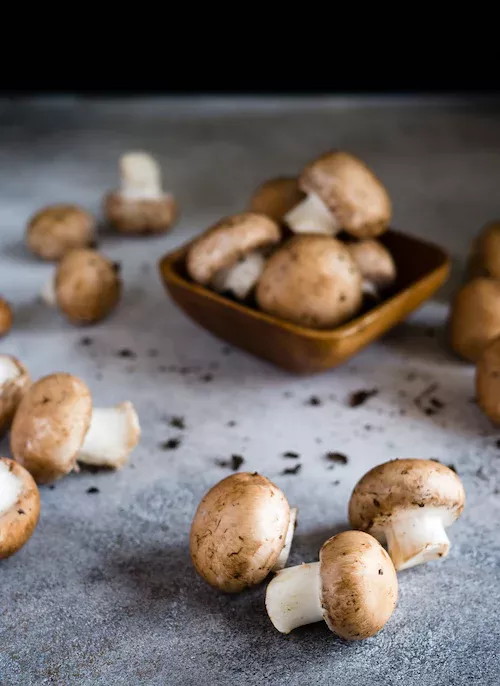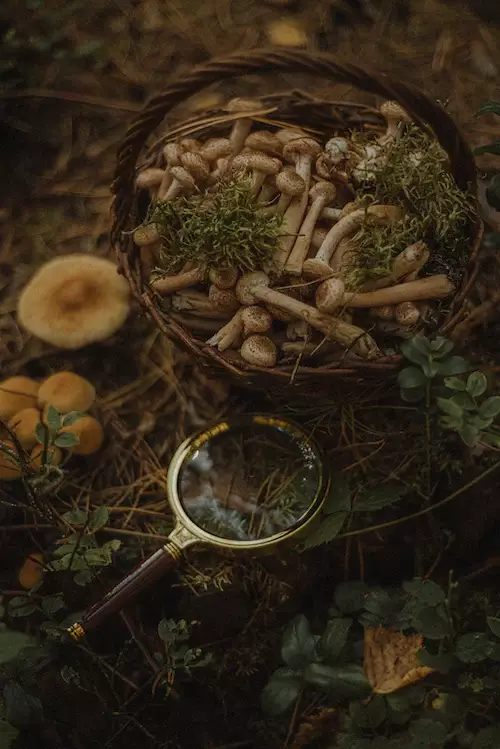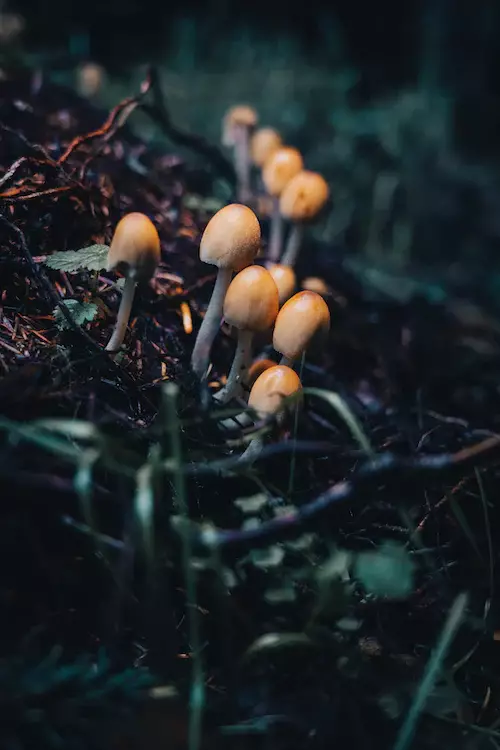How To Make Button Mushroom Spawn at Home
Making your own button mushroom spawn at home is a great way to ensure you have a steady supply of mushrooms on hand. This is a relatively simple process that requires some basic materials and supplies. In this article, we will discuss how to make your button mushroom spawn at home.
Obtain fresh button mushrooms and prepare the substrate by sterilizing wheat or barley grains. Transfer the grain to a jar with a lid after allowing it to cool. Break the mushroom cap into bits and mix it with the substrate. Sterilize a compost and mix it with the mushroom spawn to inoculate the substrate.
With the right knowledge and supplies, you will be able to make enough spawn to keep your kitchen stocked with fresh button mushrooms.
Summary
- By having supplies such as substrates, grain or wheat grains, spore syringes, or culture ready, you can easily create your button mushroom spawn at home.
- It's important to maintain a sterile environment throughout the process to avoid contamination.
- Button mushrooms require a cool and humid environment to fruit.

On this page:
Let's Make Homemade Button Mushroom Spawn
Button mushroom spawn can be made at home with a few simple steps. Here's a basic guide to getting you started:
1. Gather the necessary supplies to make the mushroom spawn
To create homemade button mushroom spawn, you will need the following supplies:
-
Obtain a fresh button mushroom from the grocery store or farmer's market. Make sure it's healthy and free from any signs of decay.
-
You will need to prepare a substrate for your mushroom spawn using sterilized wheat or barley grains. The grains should be sterilized using a pressure cooker or autoclave to prevent contamination.
-
You will need a pressure cooker or autoclave to sterilize the grains.
-
You will need a spore syringe or culture to inoculate the sterilized grains with the mushroom spores or mycelium.
-
You will need a sterile container with a breathable lid to hold your mushroom spawn.
-
You will need gloves, alcohol, and other sterilization equipment to maintain a sterile environment during the process.
2. Prepare the spawn container to hold the spawn
To prepare the spawn container for making button mushroom spawn, you will need to follow these steps:
-
Choose a container that is large enough to hold the amount of spawn you need. You can use plastic bags, cardboard boxes, or plastic containers with lids.
-
Sterilize the container to prevent any contamination. You can sterilize the container by boiling it in water for 30 minutes or by using a pressure cooker.
3. Prepare the substrate for the spawn
To prepare the substrate for making button mushroom spawn, follow these steps:
-
For button mushrooms, you can use composted straw, horse manure, or a combination of the two.
-
To prevent any contamination and create an environment that is conducive to mushroom growth, you can sterilize or pasteurize the substrate. To sterilize the substrate, you can heat it in a pressure cooker at 15 psi for 2 hours. To pasteurize, you can heat the substrate to 160°F (71°C) for at least an hour.
-
The substrate should have a moisture content of 65-75%. To achieve this, you can add water to the substrate and mix it thoroughly.
-
Button mushrooms need a nitrogen-rich substrate, so you can add supplements like cottonseed meal, soybean meal, or poultry manure to increase the nitrogen content of the substrate.
-
Button mushrooms grow best in a pH range of 6-7. To adjust the pH, you can add lime to raise the pH or sulfur to lower the pH.
-
Once the substrate is prepared, you can mix in the mushroom spawn. Mushroom spawn is the mycelium of the mushroom that has been grown on a substrate like rye grain or sawdust.
-
Pack the substrate and spawn mixture into a container or bag. The container should be sterilized or pasteurized to prevent contamination.

4. Inoculate the substrate with the mushroom spawn
Inoculate the substrate with mushroom spawn. You can purchase mushroom spawn online or from a local supplier. The amount of spawn you add depends on the type of mushroom and the size of the container.
-
A general rule is to use 10–20% spawn by weight of the substrate. Mix the spawn into the substrate thoroughly to ensure it is evenly distributed.
-
Once the spawn is mixed into the substrate, transfer the mixture to a growing container. You can use plastic bags, trays, or buckets as growing containers.
-
Cover the growing container with a lid or plastic wrap to maintain humidity and temperature. Make sure to create air holes in the container for ventilation.
5. Incubate the substrate in the container
To incubate the substrate for making button mushroom spawn, follow these steps:
-
Seal the container and place it in a warm, dark place. The temperature should be between 70°F (21°C) and 75°F (24°C). The mycelium will begin to grow and spread throughout the substrate.
-
The substrate needs to be kept moist but not too wet. You can monitor the humidity by misting the substrate with water or by using a humidifier. The ideal humidity level for button mushrooms is between 80% and 90%.
-
Direct sunlight can cause the substrate to dry out and can inhibit mushroom growth. Keep the substrate in a shaded area or cover it with a blanket or tarp.
-
While incubating the substrate, check it regularly for any signs of contamination, such as mold or bacteria. If you see any contamination, remove the affected area immediately to prevent it from spreading.
-
The mycelium will take 2-4 weeks to colonize the substrate. Once the substrate is fully colonized, you will see white mycelium growing throughout.
6. Prepare for the proper fruiting of the mushroom spawn
Once the mycelium has colonized the substrate, you can prepare for fruiting. To prepare for fruiting when making a button mushroom spawn, follow these steps:
-
Button mushrooms require a cool and humid environment to fruit. The ideal temperature for fruiting is between 60 °F (15.5 °C) and 68 °F (20 °C). The ideal humidity level is between 85% and 95%. You can create this environment by using a humidifier or by misting the substrate regularly.
-
Button mushrooms require fresh air to grow properly. Cut slits or holes in the container to allow for airflow. You can also use a fan to circulate the air.
-
Button mushrooms require light to initiate fruiting, but they don't need direct sunlight. A few hours of indirect light each day is sufficient. You can use a fluorescent light or a grow light.

7. You can now harvest a button mushroom spawn
After a few days, you should start to see small pinheads, or baby mushrooms, forming on the surface of the substrate. This is a sign that the mushrooms are ready to fruit. After a few weeks, the mushrooms will begin to grow. Harvest them when they are fully grown and before the caps begin to flatten out.
To harvest button mushrooms from a spawn, follow these steps:
-
Button mushrooms are mature when the caps are fully formed but have not yet flattened out. The caps should be tightly closed and have a light brown color.
-
To harvest a mushroom, gently twist the stem and pull it off the substrate. Be sure to avoid pulling too hard, as this can damage the mycelium and prevent future growth.
-
Harvest the mushrooms as soon as they reach maturity. Leaving mature mushrooms on the substrate for too long can cause them to become overripe and can also increase the risk of contamination.
-
Button mushrooms should be stored in a paper bag or container in the refrigerator. They will stay fresh for up to a week.



